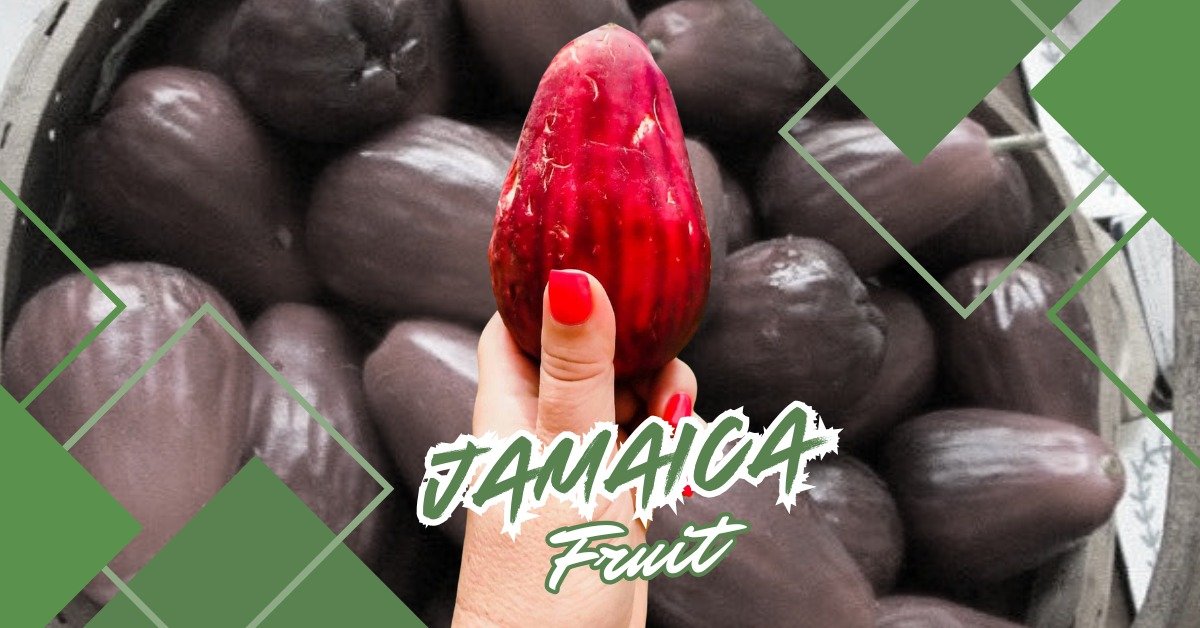Jamaica is famous for its rich culture, vibrant music, and beautiful beaches. However, what often goes unnoticed is the island’s incredible variety of tropical fruits. From the more familiar mangoes to exotic options like guinep and otaheite apples, the fruits of Jamaica are as diverse as the island’s culture. Whether you’re a health-conscious traveler or a curious foodie, these fruits offer both unique flavors and significant health benefits. Let’s dive into the most popular Jamaican fruits and what makes them so special.
What is Jamaica Fruit? An Introduction to the Island’s Tropical Delights
Jamaica is home to some of the most flavorful fruits in the world. Due to the island’s tropical climate, the fruits grow abundantly year-round, providing an excellent source of vitamins and nutrients for the local population. Jamaica fruit, in general, refers to the various fruits native to the island, including ackee, guinep, and soursop. These fruits thrive in the warm, sunny weather, and many of them are used not only for food but also for medicinal purposes.
Top 10 Most Popular Fruits in Jamaica
When it comes to fruits, Jamaica offers a wide selection. Here are the top 10 Jamaican fruits that you should try when visiting the island:
- Ackee – Often considered the national fruit of Jamaica, ackee is a crucial ingredient in Jamaica’s national dish, ackee and saltfish. Although it is cooked like a vegetable, ackee is a fruit with a buttery texture. It must be fully ripe and properly cooked, as it can be toxic when unripe.
- Guinep – Known for its sweet and tangy flavor, guinep is a small, green fruit with a soft, jelly-like flesh inside. It’s a favorite among locals, especially during the summer months.
- Mango – Mangoes are one of the most popular fruits globally, and Jamaica is no exception. Jamaican mangoes, particularly the East Indian and Julie varieties, are juicy, sweet, and incredibly flavorful.
- Otaheite Apple – Also known as the Jamaican apple or Malay apple, this fruit has a crisp, juicy texture and a mildly sweet flavor. It’s often eaten fresh or made into juices and jams.
- Soursop – This spiky green fruit has soft white flesh with a sweet-tart taste. Soursop is known for its potential health benefits, including being a rich source of antioxidants that support immune health.
- Sweet Sop – A close relative of soursop, sweet sop has a creamy, custard-like texture and a sweet flavor. It is often eaten as a dessert or added to smoothies.
- Breadfruit – Although not a sweet fruit, breadfruit is a staple in the Jamaican diet. It is starchy and is typically boiled, roasted, or fried. Breadfruit is an excellent source of dietary fiber and complex carbohydrates.
- Naseberry – Similar in flavor to a pear, the naseberry has a gritty texture with a sweet, caramel-like taste. It is often eaten fresh or used in desserts.
- Star Apple – This fruit gets its name from the star-shaped pattern that appears when it’s cut open. Star apple has a thick, purple skin and a sweet, milky flesh inside.
- Guava – Guava is a tropical favorite with a sweet, slightly tangy flavor. It’s rich in Vitamin C and is often made into juices, jams, or eaten fresh.
Health Benefits of Jamaica Fruit: Why You Should Include Them in Your Diet
Jamaica’s fruits aren’t just delicious—they are also packed with nutrients. Many Jamaican fruits are rich in vitamins, minerals, and antioxidants, making them a healthy addition to any diet. For example, ackee is high in essential fatty acids, which promote heart health, while soursop is known for its cancer-fighting properties due to its antioxidant content. Mangoes, on the other hand, are packed with Vitamin A, which is important for maintaining good vision and skin health.
These fruits also offer digestive benefits. For instance, guava is a great source of dietary fiber, which aids in digestion and promotes a healthy gut. Similarly, the high fiber content in breadfruit helps regulate blood sugar levels and improves overall digestion. With the variety of vitamins, minerals, and antioxidants found in Jamaican fruits, they offer a natural and delicious way to boost your health.
Where to Find Authentic Jamaican Fruits
If you’re visiting Jamaica, the best place to find authentic fruits is at local markets. The island’s numerous street vendors sell a wide variety of fresh, organic fruits at affordable prices. Some of the best-known markets include Coronation Market in Kingston and the Ocho Rios Market. These markets offer an authentic experience where you can buy directly from local farmers. You can also find Jamaican fruits in supermarkets, although the selection may be more limited compared to the open-air markets.
For those outside Jamaica, many Jamaican fruits can be found at Caribbean specialty stores in the U.S., U.K., and Canada. Certain fruits like mangoes and guava are available year-round in most grocery stores, but rarer options like ackee or otaheite apples may need to be sourced from specialty markets.
How to Grow Jamaican Fruits at Home: A Beginner’s Guide
Growing Jamaican fruits at home is entirely possible, even if you live outside the tropics. Many tropical fruits, like mangoes and guavas, can be grown in pots or containers, making them suitable for both outdoor and indoor gardening. The key to growing these fruits is providing the right conditions. Tropical fruits need plenty of sunlight, so place them in a sunny spot, ideally in a greenhouse or next to a large window. They also require well-drained soil, regular watering, and, in colder climates, protection from frost.
Fruits like ackee and breadfruit can be more challenging to grow because they need specific conditions to thrive. However, it’s worth trying to cultivate these fruits if you live in a tropical or subtropical area. With patience and the right care, you could have your very own supply of Jamaican fruits at home.
How Jamaica’s Climate Shapes Its Fruit Varieties
Jamaica’s tropical climate plays a significant role in shaping the island’s fruit varieties. The warm, humid conditions are perfect for fruit-bearing trees and plants, allowing them to flourish throughout the year. The island’s fertile soil, enriched by volcanic ash, further enhances the quality and flavor of the fruits.
Because Jamaica has both a wet and dry season, different fruits peak during various times of the year. For instance, mangoes are more abundant during the wet season, while ackee is available year-round. This climatic diversity ensures that Jamaica offers an ever-changing selection of fresh fruits throughout the year.
Rare and Exotic Fruits to Look for in Jamaica
Beyond the commonly known fruits like mangoes and ackee, Jamaica is also home to some rare and exotic fruits that many people outside the Caribbean may never have heard of. These lesser-known fruits are not only delicious but also hold special places in Jamaican culture and cuisine. If you’re exploring the island’s local markets or visiting during the right season, here are some rare fruits to keep an eye out for.
One such fruit is June plum, known for its unique combination of sweet and sour flavors. It has a crisp, juicy flesh and can be eaten raw or added to salads and chutneys. The fruit is especially popular as a base for refreshing juices, often mixed with ginger for an extra kick. Besides its taste, June plum is rich in Vitamin C, making it great for boosting immunity.
Another fascinating fruit is ugli fruit, which gets its name from its rough, wrinkled skin. Despite its appearance, ugli fruit has a surprisingly sweet, tangy flavor, similar to a blend of orange, tangerine, and grapefruit. It’s often enjoyed as a refreshing snack, juiced, or used in desserts. Ugli fruit is also rich in fiber and Vitamin A, supporting digestive health and vision.
Otaheite gooseberry is another rare find in Jamaica. Although its tartness may not appeal to everyone, this small, yellow fruit is often used to make preserves, chutneys, and sauces. It’s packed with antioxidants, making it a healthy option despite its sour taste. In traditional Jamaican remedies, otaheite gooseberry is also believed to help reduce fevers and fight infections.
These rare fruits add to the incredible diversity of Jamaica’s natural produce. If you’re lucky enough to visit during the peak season, be sure to sample these exotic options to get a fuller taste of Jamaica’s rich agricultural heritage.
Conclusion
Jamaica’s tropical fruits offer a feast for the senses with their vibrant colors, bold flavors, and impressive health benefits. From the buttery ackee to the tangy guinep, each fruit tells a story of the island’s rich natural bounty. Whether you’re visiting Jamaica or simply exploring tropical fruits from afar, these fruits are a must-try for anyone seeking to experience a true taste of the Caribbean. Incorporating Jamaican fruits into your diet not only boosts your nutritional intake but also brings a taste of the island’s culture to your plate.
FAQs
What is the most popular fruit in Jamaica?
The ackee is considered Jamaica’s most popular fruit and is an essential ingredient in the national dish, ackee and saltfish.
Can I find Jamaican fruits outside of Jamaica?
Yes, many Jamaican fruits like mangoes, guava, and ackee are available in Caribbean specialty stores outside Jamaica.
What are the health benefits of soursop?
Soursop is rich in antioxidants, which may help fight inflammation, improve immunity, and even have cancer-fighting properties.
When is the best time to visit Jamaica for fruit?
Jamaica’s fruits are available year-round, but the wet season (June to November) offers an abundance of tropical fruits like mangoes and guinep.
Can I grow Jamaican fruits at home?
Yes, many Jamaican fruits like guava and mango can be grown at home, especially in warm climates or in greenhouses.

Alex Taylor is a seasoned writer and editor with over 5 years in digital media, specializing in practical home maintenance guides and homeowner tips. From heating system upkeep to seasonal repair checklists, Alex blends clear, relatable advice with real-world experience to help readers protect their homes and budgets. He personally reviews and fact-checks every article in his areas of expertise to ensure accuracy, clarity, and real-world usefulness. His work also spans tech, culture, fashion, sports, and lifestyle—always with a focus on clarity, relevance, and reader value.
Discover more from Try Hard Guides
Subscribe to get the latest posts sent to your email.

